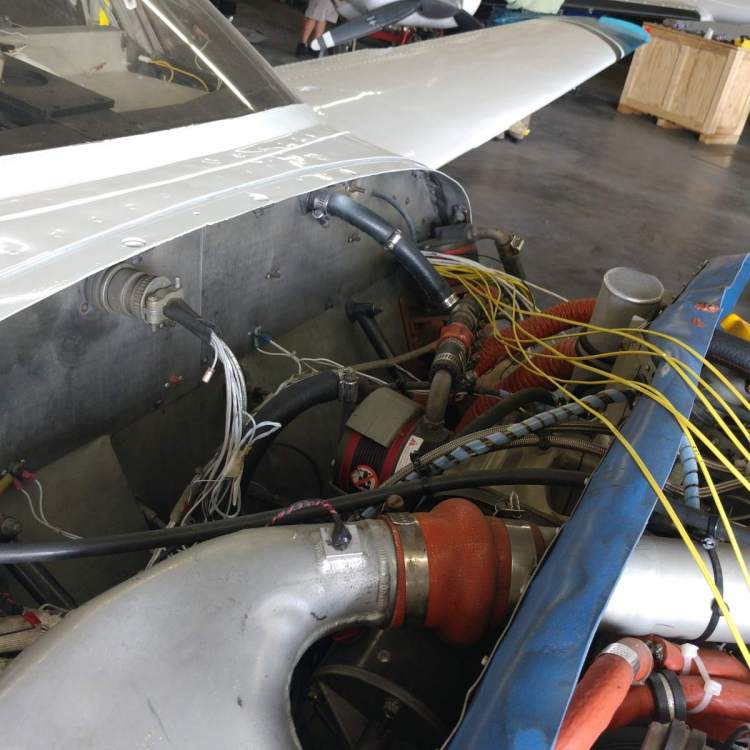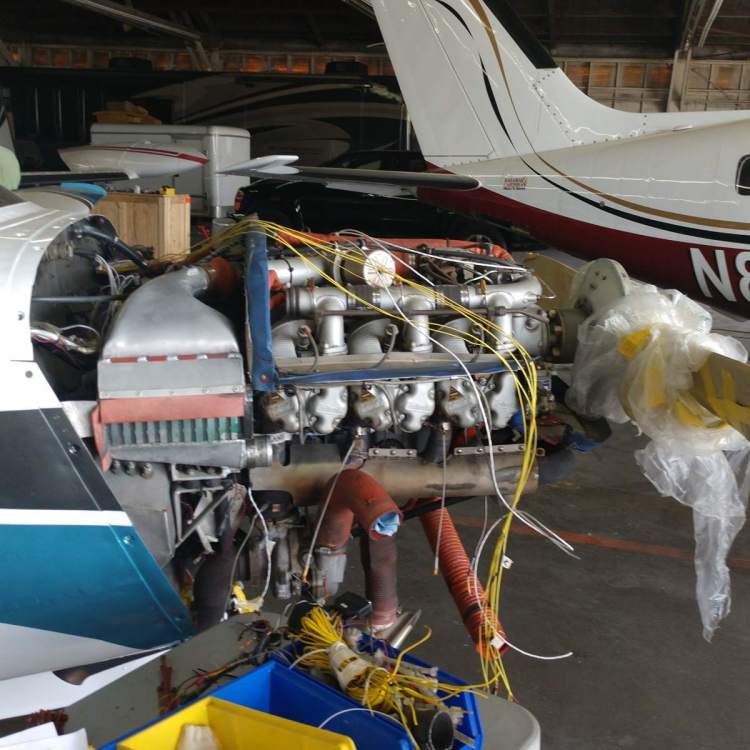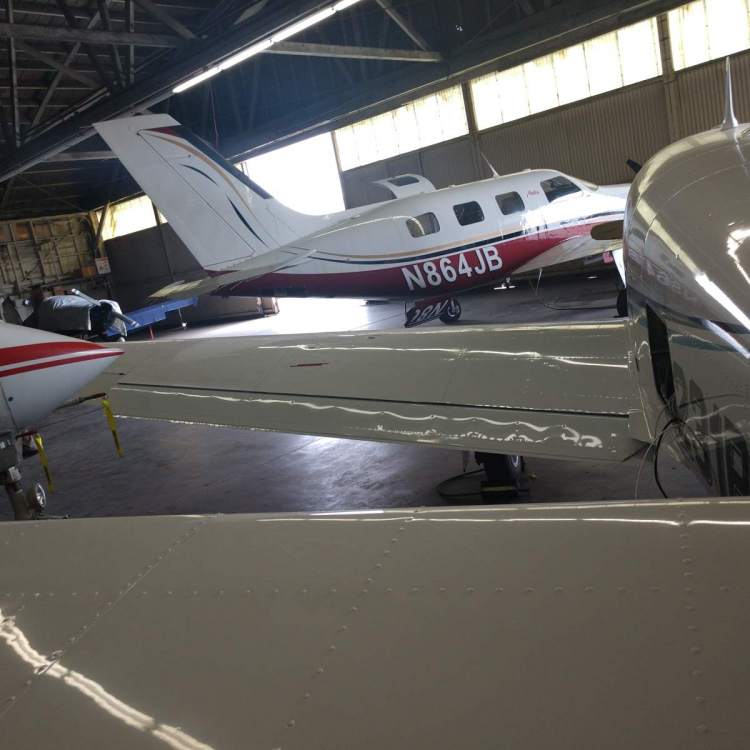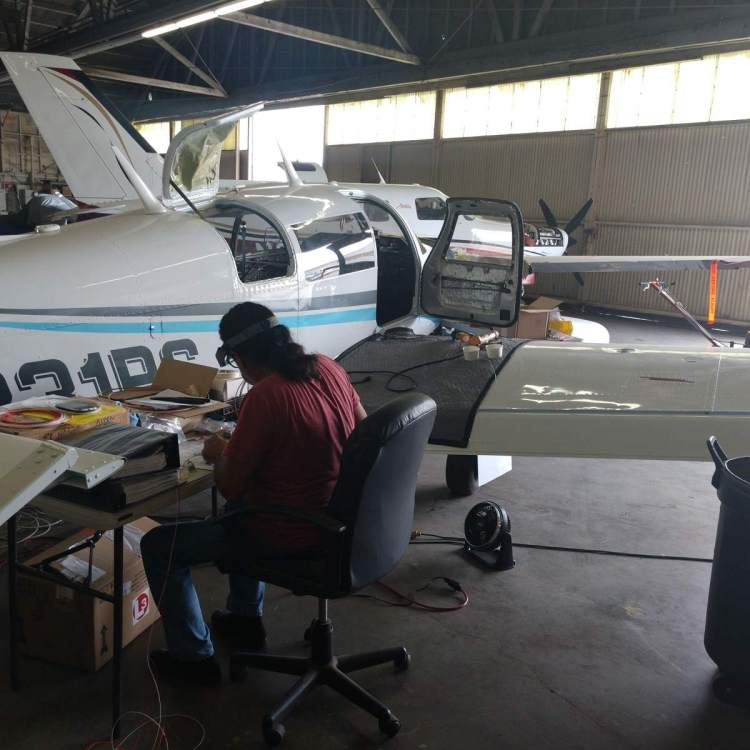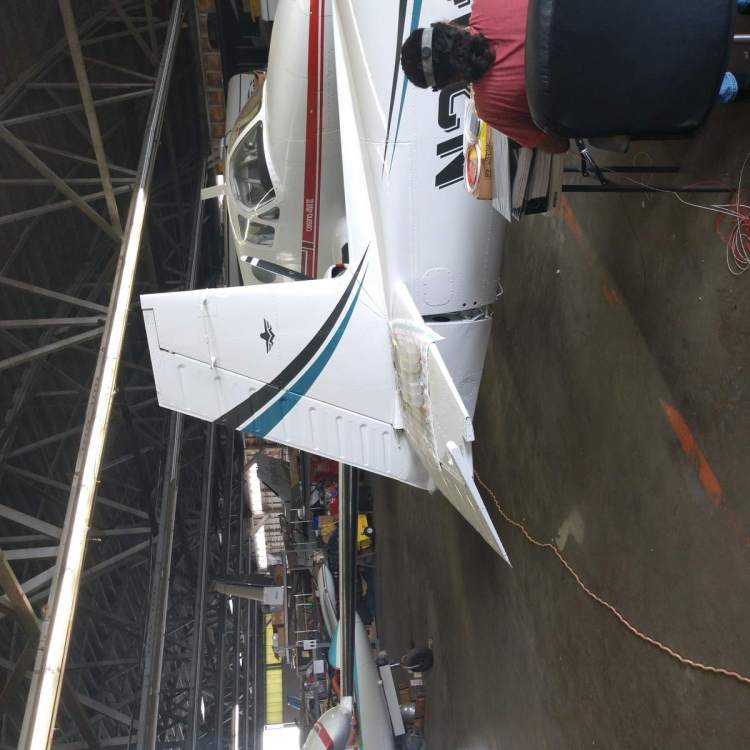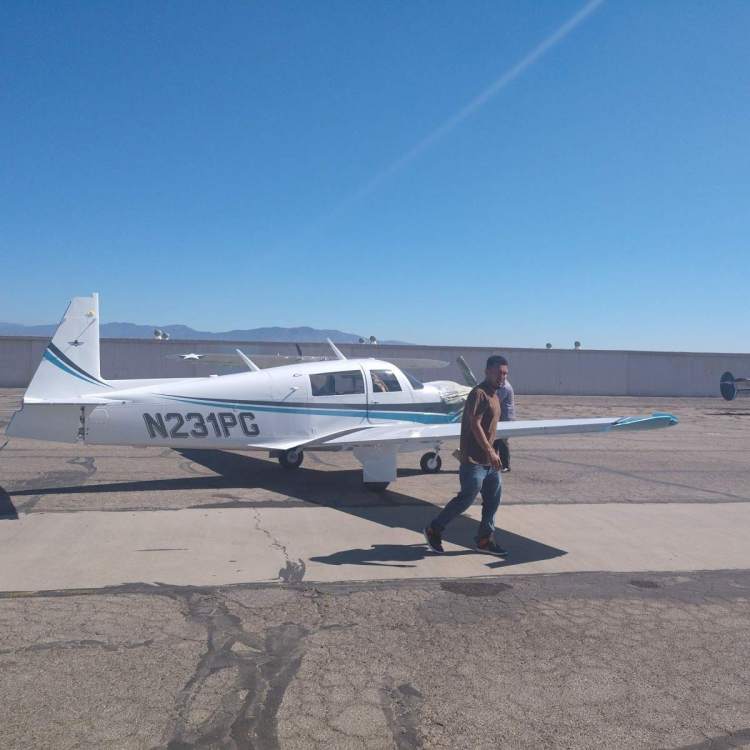
anonymouse
Basic Member-
Posts
31 -
Joined
-
Last visited
Content Type
Profiles
Forums
Blogs
Gallery
Downloads
Media Demo
Events
Everything posted by anonymouse
-
It's a joke. There's always a lot of hand wringing about damaging your plane by breathing on it the wrong way.
-
Hi Guys, I no longer own a Mooney; but I used to be on this board. Now I own a Cessna TR182. It's a lovely bird, but absolutely refuses to start below about 45 degrees. No amount of jump packs, throttle/mixture combos, flooded starts, dry starts, throttle pumping (no accelerator pump), jumping around in circles or wiggling my ears works. I had a few other people give it a whirl and they also couldn't make it happen. Even an EZ-Heat plug in engine heater for an hour didn't work. While searching for solutions outside of the $1000+ Tanis/Reiff preheater or the $1200/mo. heated hangar, I came upon this thread. I took heavy inspiration from the OP in this thread and came up with a battery-free version with longer leads and alligator clamps on my car battery. I didn't want yet another thing to charge and omitting the battery makes the build significantly lighter/easier/cheaper. I ran it for half an hour today with ambient temps about 35 (engine was colder) and a pretty dead battery (from the prior failed attempts) and the plane started as if on a warm day (1 pump of primer, closed throttle, full rich mixture). Here are some more details and labeled pictures that may give more info to the next person to attempt the build. Parts: 1x VEVOR 5kw diesel parking heater with the cheapest control option available ($90) 1x 24" plastic toolbox ($25) 1x 1.5 quart coolant overflow bottle ($8) 1x roll of duct tape/heat tape ($5) 1x 12' 4" dryer vent hose ($8) 1x 4" to 3" vent reducer ($5) 1x alligator clamps ($4) 1x 6 foot stranded black wire (the red one is long enough) ($4) 1x small pack of wire nuts (you need only 1) ($3) 4x 1/4" x 3/4" bolts and 4x nuts (for mounting the backing plate) ($1) Total $153 Notes: The heater is designed for heating vans/RV's while parked without needing to leave the larger engine running. It is rotated 90 degrees along its long axis for this installation (the most allowed; "up" would have the intake/fuel line/exhaust at the bottom). It produces (clean) hot air out the left side and sucks in clean/cool air from the right side. It uses a separate clean air intake/exhaust from the back side and transmits heat via a heat exchanger within the unit. My version is designed to be used with the lid open, so I didn't have to cut a hole in the right side. The heater comes with a metric ton of accessories and hardware, virtually none of which are mentioned in the manual. It comes with a 10 liter gas tank, but that was far too large, so I used a couple bits from that hardware along with a 1.5 qt. coolant overflow bottle from my local auto parts store for the diesel fuel tank. The tank fits perfectly with friction between the tool box and heater case. I left the fuel line intentionally long from the fuel tank to the pump so I can pull it out for refueling outside of the case. The heater case stays cool/warm-ish to the touch, and diesel doesn't ignite without compression at any reasonable temperature, so I'm not too concerned about explosion/detonation. The heater burns about 2 liters/.5 gallons per hour at full power. The heater kit comes with most of the hardware pictured - the controller, wiring harness, fuel line (cut to size), too large a fuel tank fuel line clamps, filter, fuel pump, screw clamps, and short 3 inch diameter hoses, the rubber mounting gasket and metal backing plate were all in the kit. There is also a bunch of unlabeled mystery hardware that I didn't end up using. What's not in the kit? A negative battery lead longer than a few inches (bizarrely, the positive lead is about 10 feet long), any sort of termination for the wires (they are just stranded insulated copper unceremoniously cut), any semblance of build quality, or a usable instruction manual. It's comically poorly translated, has incredibly blurry images, and features hardware that isn't in the kit while making no mention of hardware that is in the kit. You are really on your own (or, what you can Google). "Fun" things I discovered while bodging this together: 1. Getting the combustion air in, exhaust air out, fuel line, and four mounting bolts through their holes and through the backing plate is an exercise in patience and frustration. It's very tight tolerance, and the fuel line on my unit was at an angle to the other tubes/bolts. 2. My fresh air intake fan would not spin freely, so I got error E-06 (indicated by the first 6 lights on the control panel blinking). This was resolved by removing the fresh air cap, popping off the plastic cover, stroking my chin thoughtfully, and then taking a screwdriver to the fan and prying it out (toward the right) about 1/4". Then it worked flawlessly. Like I said, build quality is non-existent. Get the German designs ($400-500) if you want better. 3. The 4" dryer vent line at it's near full extension blows 161 degree air at the outlet, which will melt your fuel lines, corrode your engine and make the wings fall off your plane. It fits perfectly in my oil dipstick door, but I could also easily put it in my nose cowling with my cowling plug helping to hold it in. I couldn't figure out an effective spot to put it through the landing gear, but Your Mooney May Vary. 4. Battery usage is near-trivial - about 70 watts to get things started, and then it drops to about 20 watts. I drive an EV, so it's even more trivial for me as the high voltage pack charges the 12V battery, but even barring that, you'd run out of diesel well before you run out of electrons. 5. The exhaust is really noxious as it is getting started/purged, but then it clears up quickly. However, it's still pretty noxious 10-15 minutes after use (probably just the exhaust in the pipe working its way out) as well. I put it in the back of my car and had to keep the windows cracked for a bit. I'm not sure I'd fly with it after use for multiple reasons, but this one being paramount. However, I do store it in the luggage compartment of the plane while parked on the ramp in between uses. Any diesel leaks that manifest would be wholly contained within the toolbox. 6. It stores pretty nicely; immediately after turning the unit off, it's easy to disconnect the leads from the car, toss the wires in the case, close the lid, pick up the box with one hand and the dryer vent line with the other. It doesn't get too warm, even with the lid closed (but again, I use it with the lid open for ample fresh air in). 7. Pressing and holding the "off" button on the control panel turns the fuel pump on for priming/clearing air bubbles out of the fuel line (not in the manual). 8. My control panel has 10 lights for fan control speed/temperature, but you can only adjust the fan from 1 to 6. At least on my model, the last 4 lights are for decoration. Maybe the 8kw version uses those. Maybe it's just a generic controller. Maybe it's just bad build quality. 9. The fuel pump should be mounted at an angle - it cannot be horizontal; ideal is 15-30 degrees, but up to vertical is allowed. In any case, if I can do it, you can do it. I have next to no motor skills and I don't even own a socket set. A dremel tool or a hole saw kit will make your life immensely easier, but you can do everything I did with a crescent wrench, a Fisher-Price drill, a couple of screwdrivers and a nail clipper (for clipping fuel lines, stripping wires and crimping the connection to the alligator clamps, of course). You really are in the Thunder Dome when it comes to figuring out which of the 4 slightly different sized screws/bolts/nuts that aren't in the manual to use to attach a bit that isn't in the manual to another part that may be in there, but I'm happy to help out if you get lost. For $153, 4-5 hours of head scratching, and about $1 of fuel per pre-heat, it's quite the worthwhile project.
-
FS - 1979 M20K 231 (KDXR) Danbury CT
anonymouse replied to Stephen Clark's topic in Aircraft Classifieds
My wife and I don't own much and live relatively simply - the plane is/was our luxury and chief method of disposing of excess cash. It will be a real shame to have to leave it behind. I've gotten a few PM's and am in early discussions with a couple of people, but I welcome additional inquiries. I haven't (yet) posted this plane for lease/sale anywhere else.- 14 replies
-
- oxygen
- intercooler
-
(and 7 more)
Tagged with:
-
FS - 1979 M20K 231 (KDXR) Danbury CT
anonymouse replied to Stephen Clark's topic in Aircraft Classifieds
You have PM with my contact info. Thanks!- 14 replies
-
- oxygen
- intercooler
-
(and 7 more)
Tagged with:
-
FS - 1979 M20K 231 (KDXR) Danbury CT
anonymouse replied to Stephen Clark's topic in Aircraft Classifieds
Someone may have a great opportunity on their hands. As stated above, I bought this aircraft in February and flew it back to SoCal. Since then, it got a new paint job (full strip, body work, etc.) and the cowling totally refurbished. As it sits, it is in the avionics shop getting all the old stuff ripped out and an EDM-900, Aspen with AOA/SVT, and a Lynx ADS-B transponder installed. The interior has been removed and is being totally replaced with new upholstery and fabric to match the paint job. It will also get an annual (on top of the significant checkout/repairs that were done before my purchase) before it is done with the total refurbishment, and should be ready to fly in a few weeks. Between the investment the prior owner put into this plane and its cosmetic/panel improvements during my short ownership of it, there is very little that hasn't been repaired/replaced in the last few years. About 2 weeks ago, my wife got a job offer - in Thailand. While the move isn't certain, it's looking quite probable - so I either have to sell the plane or find someone to lease it to as bringing it to Thailand isn't practical or financially sane. I have a loan on the plane, and can either pay it off (and a small prepayment penalty), or I can find someone that goes on my insurance policy to fly the plane/reimburse me whilst I maintain the loan, or some other creative arrangement. The plane is based out of KEMT, but is currently at KCNO. If you or someone you know are interested in about as nice a 231 K as you could ask for, feel free to PM. I'm probably looking at about a 2 month timeline for sale/lease. Thanks! Without flying surfaces or cowling, but gives an idea of the paint scheme. Flying surfaces have since been attached, cowling refurbished (new fiberglass/carbon fiber, new heat shields, etc.) and it is now in the avionics shop.- 14 replies
-
- oxygen
- intercooler
-
(and 7 more)
Tagged with:
-
Looking for salvage/used interior plastics M20K
anonymouse replied to anonymouse's topic in Modern Mooney Discussion
Thanks @Marauder. Those pieces don't appear to match what is in the M20J/K. My panels appear to have the window frame integrated into those panels, making one large piece of plastic. -
Looking for salvage/used interior plastics M20K
anonymouse replied to anonymouse's topic in Modern Mooney Discussion
Thanks to some PM chats, I've located the cargo door panel and the 2 panels on the door. I'm still looking for the rest on the list: 2 side panels (front/rear) on pilot side 1 side panel (rear) on copilot side Thanks! -
Looking for salvage/used interior plastics M20K
anonymouse replied to anonymouse's topic in Modern Mooney Discussion
Thanks for the referral. Completely understood - I should say I'm not doing the interior work myself - I have a well-regarded airplane interior person doing the work. We're likely going to be painting/patching/covering all the other panels already, so if I can get the few that I need at a 'vintage' price/condition that are serviceable, it could be less expensive than plane plastics and I'll end up with the same result. If I'm covering/painting pieces anyway, I really don't care if the plastic is new or old. -
Looking for salvage/used interior plastics M20K
anonymouse replied to anonymouse's topic in Modern Mooney Discussion
I struck out with Jaeger. Still on the hunt. I must by using the wrong search words on Ebay - all I can find is a top door panel, but the shipping alone is $200.. Can you point me to the right auction? -
My plane is currently getting a paint job and interior redo. I'm looking for the following bits for a 1979 M20K (231, factory oxygen if it matters), which, upon removal, disintegrated into many irrecoverable/unusable bits even with the greatest of care (they were already cracked/warped/worn/repaired and just turned to dust). I reached out to Paul Loewen without any luck. Does anyone have a source they could recommend? The 2 side panels on the pilot side 1 side panel on the copilot side, cargo door panel 2 panels on the door I'm aware of Plane Plastics, but their prices are a fortune - and since I was able to save most of the bits and will likely be wrapping or painting them, it seems silly to get new pieces that are going to be covered/painted anyway. It also seems like they only go up to the "J" model, but I assume they are very similar to the K if I had to go that route.
-
FWIW, I bought my first Mooney a few months ago, and it's a 231. It's currently sitting in the paint shop, but the benefits of a turbo (especially going East, or above clouds) are far more useful/often than I thought they would be before I bought a turbo plane. Once I got my fuel flow setup properly done, it runs pretty cool. It's like any other plane - once you get used to where all the knobs and buttons are and have a good checklist, it's not particularly challenging to fly. Flying is expensive, so the difference between one or the other on a per hour basis wasn't really a decisive factor for me.
-
Here is availability info straight from an email I sent to Dynon: "No one here at Dynon has any guess as to when the Mooneys will happen. We will not start selling the STC for the 172 until the 2nd QTR. After our dedicated shops provide feedback on the installations, and we learn how to make their lives easier, we can then start tackling other makes and models. Conservatively, it could be anywhere between 6-18 months after we start selling the 172 STC. "
-
Dynon got their 172 STC approved today. Very exciting news, and with luck they will be able to quickly expand it to our birds now that they have their foot in the door.
-
New to me M20K - many questions (now AOG)
anonymouse replied to anonymouse's topic in Modern Mooney Discussion
As most predicted, it was the hose backing off the induction port of the turbo with just a small opening. So, I'm back and flying again. Now for attempt #2 of fuel flow setup. -
I've read this thread a few times now and didn't see how much it is to upgrade a GB to LB at say, an annual instead of an engine rebuild event. Has anyone priced that out?
-
New to me M20K - many questions (now AOG)
anonymouse replied to anonymouse's topic in Modern Mooney Discussion
Thanks for the thoughts, @carusoam. I feel like I've gotten some great support in this thread and in a couple PM's with people reaching out to answer most of my questions, and I think getting the fuel flow set up properly with an A&P capable of reading an 8 page document and listening to my verbal instructions will go a long way to solving a good chunk of my initial issues. I've since found where the valves are to adjust the oxygen flow, so that's one topic off the plate as well. I had to take a commercial flight and won't be home for a few days. The (new) mechanic (at a Mooney Service Center) is going to look at it early next week. As others have said, it's likely a blown off intake hose. I got a thorough PPI - I think my home field mechanic just F'ed things up. I have about 1300 hours TT, am instrument current, and previously flew a Columbia 350 on the same work trips. I don't feel like I'm in over my head at all - I just have a bad mechanic. -
New to me M20K - many questions (now AOG)
anonymouse replied to anonymouse's topic in Modern Mooney Discussion
I don't have a way to download data, yet. I have a jpi 700. He also changed the oil and re rigged the flaps, but I don't see either causing the problem either. I guess I'll find out on Friday. -
New to me M20K - many questions (now AOG)
anonymouse replied to anonymouse's topic in Modern Mooney Discussion
Well things took an interesting turn today. The mechanic did the fuel setup yesterday, and on takeoff I had exactly the same fuel flow - 21 GPH - as before. A subsequent phone call would reveal that he set it up at 40", despite me bringing him the manual and saying it had to be adjusted down to 24.7GPH at 37" because of the intercooler. "Oh" he said. What's even more fun is that I called him from SBD, where I'm now AOG. On climbout from the LA area towards Denver at 10,000 feet, I had a sudden loss of about 15" of MP and 12 GPH fuel flow. I immediately diverted and landed normally (with next to no engine power, but with oil pressure/temperature normal). I was showing something like 4 GPH on final. My working theory is that whatever he 'adjusted' popped off and slipped resulting in the sudden power loss. There is no sign of oil/leaks/catastrophic failure/untoward sounds. I don't think I lost my turbo because the severe power reduction was at all altitudes. I have a mechanic from CCB coming out on Friday to diagnose the problem. I didn't have time to look at anything on the ramp as I have a series of business meetings tomorrow and had to make immediate commercial flights. -
New to me M20K - many questions (now AOG)
anonymouse replied to anonymouse's topic in Modern Mooney Discussion
That will be a short term problem for me as I'm having a JPI 900 installed in the next couple of months. I appreciate the information in the mean time and won't stress too much about the #2 cylinder absolute temperature reading. -
New to me M20K - many questions (now AOG)
anonymouse replied to anonymouse's topic in Modern Mooney Discussion
I have the ball in the channel with markings, but no valve. My current setup goes port --> tube --> ball in channel --> tube --> mustache style cannula. From what I've read, the onboard regulator is auto-economizing. -
New to me M20K - many questions (now AOG)
anonymouse replied to anonymouse's topic in Modern Mooney Discussion
Thanks for the tip about the wing mounted gauges. My plane does not have those indicators on the wing, and I was unaware how inexpensive the part is. -
New to me M20K - many questions (now AOG)
anonymouse replied to anonymouse's topic in Modern Mooney Discussion
Thank you very much for taking the time to read through and reply to my many, many questions! I'm getting the fuel flow setup, and fuel injectors cleaned tomorrow. I gave my A&P the intercooler fuel setup parameters. I'm about 2-3 gallons too lean on takeoff for full power, which cascades throughout the flight envelope. I think getting that fixed will get a lot of my temperature-related/speed/power issues, both lean and rich of peak. Clarifications - I always climb ROP. I wanted to learn if another trip through the "red box" moving from LOP to ROP and back to LOP for a climb was OK. Re: 430 power cycle - yes, I mean turning the unit (or plane) off, and back on again. Any changes I've made to the field setup reverts. This will be less of an issue in a couple of months post-panel upgrade - of all the things, that's the least annoyance and I'm mostly curious. Re: LOP and "spikiness" - is what you're saying that the spikiness and ICP is unacceptably high in the red box (at 12GPH) even at temperatures that appear to be X degrees lean of peak? Re: Oxygen - "I use the regular, non-Oxysaver settings" - what is that? All I have (as far as I can tell) is a single knob that is basically binary in terms of flow. It seems like the built-in oxygen tank has an altitude compensating metering mechanism built in. Is there any setting/control between basically "on" and "off" that I'm not seeing? -
New to me M20K - many questions (now AOG)
anonymouse replied to anonymouse's topic in Modern Mooney Discussion
Yes, I think things are set up too lean - perhaps the last A&P used the factory engine parameters instead of the intercooler-based one. -
As some may know, I recently purchased N231PG sourced from this board, and have flown it about 20 hours since then. I'm a reasonably experienced pilot, am comfortable flying LOP, hard IFR, etc. but this is my first Mooney, first turbo plane, and first with tip tanks. I've PM'ed a lot with @jlunseth and have read most of the "M20K engine settings" threads extensively. Several things about the plane, and the engine, continue to confound me. I'm at the stage where I'm safe, but there are several things that just don't make sense to me that I've assembled into one thread. Thanks in advance for your thoughts/assistance with several threads of questions. I should say that I'm getting a fuel injector cleaning and fuel flow setup (particularly on the low side) tomorrow, which may clean some of the engine curiosities up. I have a GB engine, gami's, turbo plus intercooler, merlyn wastegate, and JPI engine monitoring/fuel flow with sensors < 12 months old, and the engine baffling, fuel intake and exhaust systems were all replaced 10 months ago. Based on my reading, I try to keep CHT's 380 or less, TIT's below 1600, and EGT's 1550 and below, and MP 36" and below. Within those guidelines, I feel "boxed into corners" LOP and ROP with this engine with very narrow acceptable engine setting windows, as described below. Engine Curiosities Takeoff - On takeoff, I shoot for 36", 2700, full rich, cowl flaps open, which gives me about 22 GPH and climb all the way using those settings. Cylinder 2 is my hottest on climb and I find myself lowering the nose to only 1-200 fpm after a few minutes to keep cylinder 2 below 380 CHT. The other 5 cylinders are all around 360 or so. EGT's are all around 1500 and TIT stays about 1560-1570. Eventually, I make it to altitude, but so far I haven't had occasion to go above 13,000. 1. Even at full rich all the way up, I can't seem to keep that one cylinder cool enough to get anywhere significantly high, even though the usual limiting factor seems to be TIT for others. Any guesses? Cruise (LOP) - After a minute of leveling off/speeding up/cooling off, being one of the cool kids, I then go for the big mixture pull to go LOP. I don't linger about the move in any sense, but I've noticed that my TIT reading will go near/above 1700 during the (rapid) transition. By the time I've pulled back to about as lean as the engine will run smoothly, I'm at something like 33-34", 2500, 1550 TIT 11.5-11.7 GPH, flaps closed. Cylinder temperatures are cool as a cucumber - #3 is the hottest CHT at 350, #2 now is the coldest cylinder at 280, EGT's are in the 1400's. 1. LOP or absolute temperatures? I've read @jlunseth's epics on how you really have little to no idea of what 'peak' is b/c of the mechanism of the Merlyn's. I'm also confused whether I should be paying more attention to leaning off CHT/EGT as GAMI seems to suggest or TIT as the POH does. If I'm looking for, say, 50 LOP TIT, isn't that 1650? If I touched nothing else aside from mixture, I could in theory be 60 degrees LOP CHT, 120 degrees LOP EGT and 130 degrees TIT at 34-36". I'm flying as per settings in the other threads, but can't square the LOP temperatures against maximum power settings. 2. Why is cylinder #2 the hottest on climbout, but the coolest LOP? Vice versa for cylinder #3? 3. The engine is rated to deliver 100% power continuously, yet I've been admonished that 12 GPH LOP (which is 78% power) is in the "red fin/red box" and I shouldn't pull that much power LOP. If the temperatures at that setting are essentially the same as above, why is it any different/more harmful? 4. At the settings above, are the other 5 cylinders that are 280-320 CHT too lean/too cool? 5. On the ROP side, EGT's/CHT's are relatively even across cylinders. On the LOP side, the EGT difference between #2 and #3 blows out to 180 degrees. Why? 6. If I accept that my engine is barely able to run LOP in an acceptable power setting, how do I handle a climb say from 10,000 to 12,000, or a strong downdraft? Go back to full takeoff configuration/ROP? Descent - I pull back to 20" MP, which zings me back to ROP and a low power setting. I have to richen things a few turns to get to peak TIT for descent, but everything seems to generally cool gradually and be happy. Cruise (ROP) - "these engines are just too cattywompus/untuned/etc." you say - just fly ROP. In my last flight, I was stepped down to 6000 and then had to cruise for 25-30 minutes at that elevation. Given that I've already put myself ROP from the descent above, in my mind, I'm basically flying a normally aspirated plane here. At full rich mixture, however, TIT increases pretty quickly at relatively low MP. Anything above, say, 25", results in a TIT getting near 1600 (at 2500 rpm if that matters). CHT's/EGT's are all 340-350/1400's. IIRC, I'm indicating about 12.5 gph. 1. Why does a setting of say, 29" MP result in an unacceptably high TIT, but 36" (takeoff) not? If I was in a normally aspirated plane, the engine would be able to pull 27" or so, so I'm barely asking the turbo to do anything. 2. Is "full rich" rich enough in this context? 3. What's the best way to keep the TIT cool in this situation? I don't have any more red knob to add, and feel like I should be able to get more power out of the engine ROP without making my turbo melt. 4. If I'm having this issue at 6000, would it be worse at higher altitudes with less dense air? If so, how the heck am I supposed to get up to said higher altitudes if LOP barely works and ROP is too hot TIT? Oxygen System - I had occasion to use the onboard oxygen system last night for the first time - a night flight at 12k. I have two of the Oxysaver cannulas, plugged them in, and rotated the oxygen knob "on", and lo and behold oxygen came out. 1. How does one 'set a flow rate'? The ball in the little meter showed "20,000 elevation", but rotating the knob is almost a binary function - either the ball was at 20,000, or it immediately fell to 0. 2. I consumed about 1/3 of a tank in 2 hours with 2 passengers. Is that normal/acceptable? 430W annoyances 1. I'm using the calculator on my 430W's "AUX" page, and at the cruise settings highlighted above, I'm usually somewhere around 170 kt. TAS. I flew back and forth to PHX from SoCal last night, and head/tail winds were forecast to be about 30kt. Going East, GS was about 200 kt., as expected. Coming back West, GS was 120kt., rarely exceeding 130kt. If anything, the storm/winds were dying down. While it's possible the winds were simply stronger than forecast coming back, I've had the same phenomenon seemingly every flight heading West, where TAS - expected wind > GS. This, obviously, could just be psychological, but I don't remember having the same issues in my previous planes. 2. I've flown behind 430's almost since beginning of my flying career, but this one hasn't been updated in quite awhile and the firmware is old (v 2.3?). If I change a field, say, to display the VNAV or cross-track error on the main screen, it doesn't save from one power cycle to another. Is this a firmware issue, a battery backup issue, a configuration issue? Fueling annoyances I have a fuel totalizer and use it. Since you never really know how much the line guy put in, error will build over time. Trying to get a visual indication of how much gas is in the tanks is absolutely befuddling. I have tip tanks. The main tanks have those amazingly annoying anti-siphon valves. To make things even more strange, I'm not convinced that my tanks are symmetrically installed and/or the baffles are equal. For example, one main tank will be filled to the anti-siphon valve, yet (what I think) is an equivalent amount of gas in the other wing has the fuel level far below that, with more apparently having sloshed over to the tip tank. The cockpit fuel gauges will burn down to about 25 gallons indicated (on both sides) and remain there for a long time whilst burning off the fuel in the tip tanks, and then descend from there. I know that the answer here is to drain everything and put in a known amount of gas to have some totalizer certainty, but how do other owners do a visual fuel level check? How do you fill the tanks? What is full? What does a full main tank look like? If I (in theory) had empty mains and filled the tip tanks, how long does it take for the gas to drain down to the mains?
-
I just bought a 231 with both. I don't understand why Merlyn has been given a virtual monopoly in the space and/or why they don't have an absolute pressure controller like the 252 instead of a semi-automatic one as they sell. It would make a world of difference for simplicity of operation.






